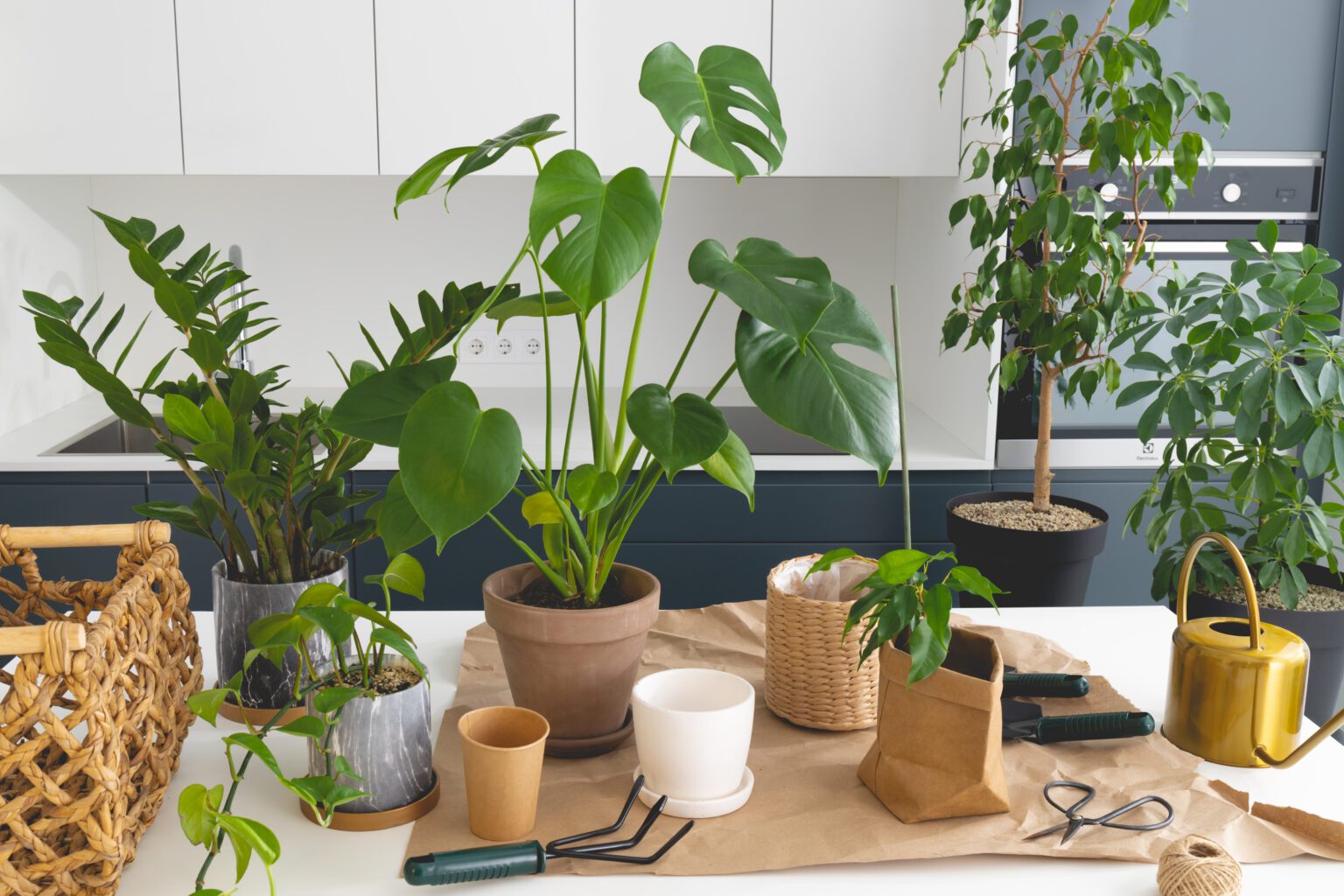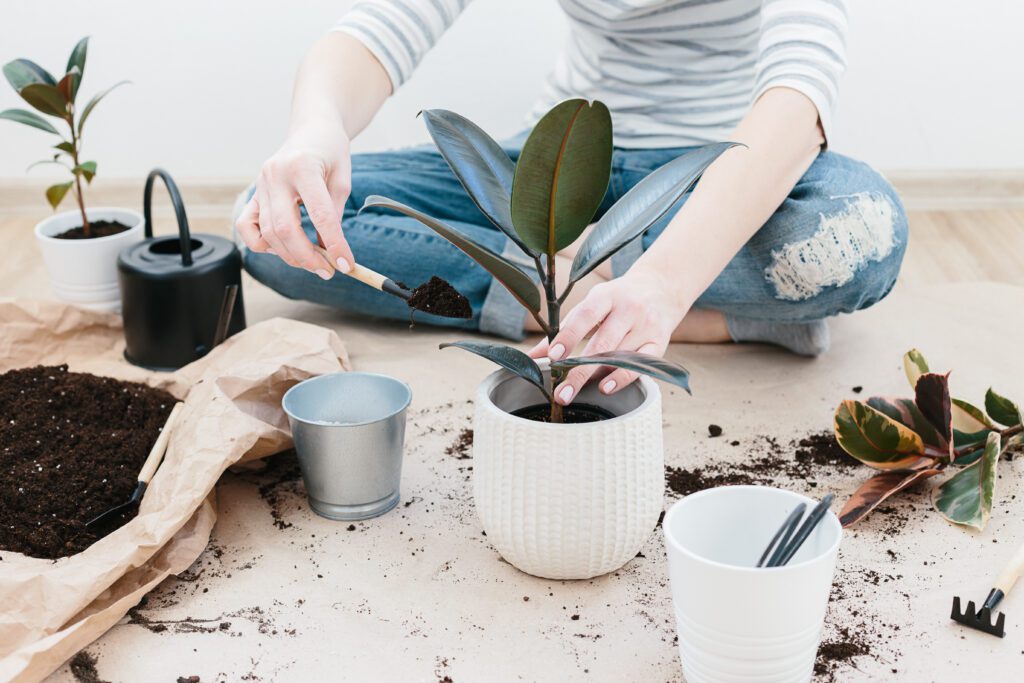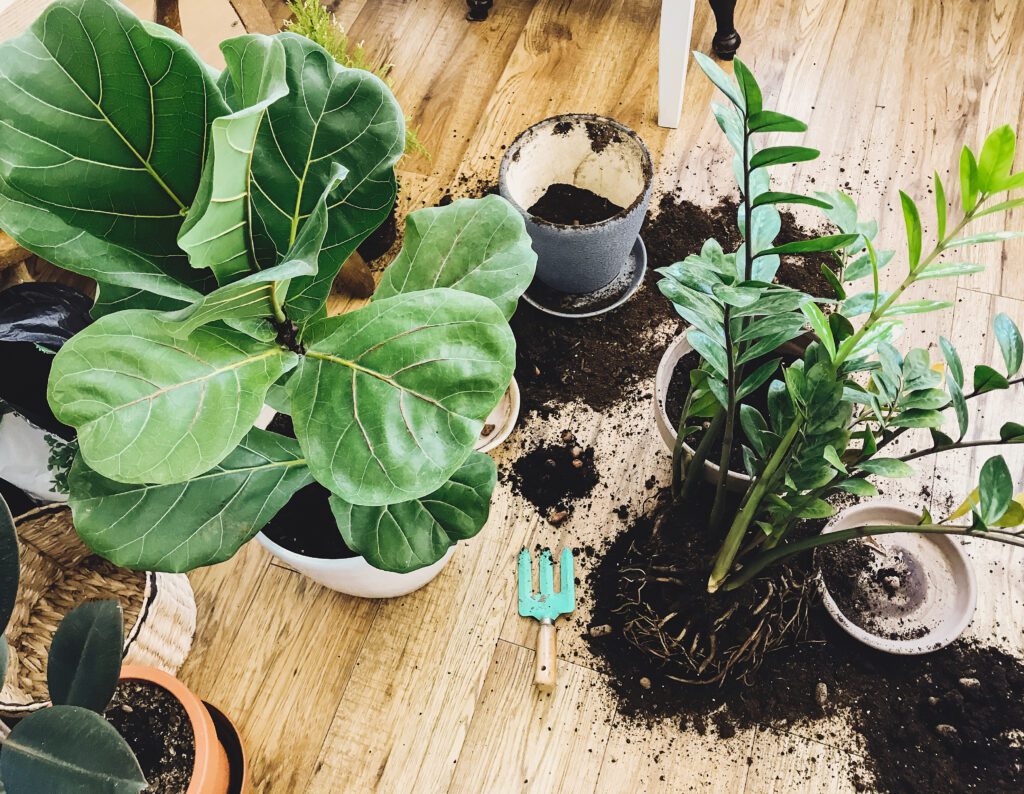Summary:
Repotting your plants is known to be a stressful event for your leafy family members. While it may be tempting to immediately put your new plant into the beautiful new pot you purchased for them, try to wait for at least two weeks for the best results.

Why You Should Wait
Alright, I know what you’re thinking, “Alyssa I spent as much on this pot as I did on the plant itself and it’s going to look SOOO good in this pot on my shelf; I’m too excited to wait so as soon as I get him home it’s moving day for the leafy guy!” Well stop that! New plants that you take home are going through a lot of change really quickly and it can be incredibly taxing on the plant, they need some time to adjust to their new homes.
Think about it for a second, when you buy a new plant you’re taking it from a place where it was (hopefully) quite happy for a while. It probably had great warmth and fantastic humidity and didn’t have to be handled all that often. When you purchased it, you more than likely took your new plant outside to get to your car where it experienced an immediate temperature and humidity change, all the worse if you are taking a plant from a warm humid greenhouse out to your car during winter in a part of the world where it gets cold. Don’t be surprised if you watch your plant droop for a couple of days from sadness (plants need to complain too!), but as long as you give it proper care in it’s new home your plant should recover quickly.
Now think about your plant getting to your home; it’s finally back in a warm environment, and if you put it in it’s new permanent home, it has the light it wants and probably the humidity too from a mister or humidifier. I’d just want to rest and recover if I was that plant, wouldn’t you? Just about the worst thing you could do to that plant right now is go tearing (even gently) through the most delicate and vital part of the plant’s body, it’s root system, as well as changing it’s home environment where it’s been living with all of its nutrients and the fertilizer from the soil it was living in, not to mention disturbing the pH it had been living with, just because you didn’t think that the exterior of that pot was pretty enough?
Honestly, I’ve done it, but somehow I don’t think my plants appreciated it.
Now having more experience, asking some experts at my local greenhouse, I’ve learned my lesson. I watched a few plants get very sad when I first took them home, some who never recovered until I learned that two week waiting period was VITAL to the health of my plants.
Tips For Repotting
Now when it comes to repotting your plants for the first time AFTER they’ve acclimated, there’s a lot to go over (enough that it should and will get it’s own article in the future), however here are some starting tips I always suggest, particularly for new plant owners.
- Leave the plant in it’s nursery pot! Generally the pots that plants come in are the right size for the current size of the plant inside and made of plastic that won’t retain unnecessary water. They also tend to have drainage holes in the bottom which is HUGELY important in the avoidance of root rot. The best part about these is you can put them in any pretty pot you want! You don’t need to worry about the ceramic retaining too much water or copper leeching into your soil, or even worrying about attempting to drill drainage holes into your $50 handmade ceramic pot (don’t ask, I’m an impulse shopper with a weakness for anything plant related). Just plop your plastic pot inside your aesthetic pot of choice and bam! Problem solved.
- If you are going to fully repot your plant, make sure there’s drainage. If that pot you’ve had your eye on from pottery barn for your new monstera doesn’t have a hole in the bottom, and you’re not willing to attempt to put one there yourself, then it’s not the pot for you. Drainage helps you avoid overwatering your plants and leaving them too wet for too long so they don’t develop root rot or pest problems. You can find a ton of pretty options on amazon for great prices.
- Finally, be gentle! As I mentioned earlier, the roots are generally the most delicate part of your plant, and they can’t survive without them! When repotting, try not to tear or break the roots. Take your time and go slow, and do your research on what kind of potting medium your specific plant enjoys, because in the repotting process you will lose some and need to be able to replace whatever is lost.
As always feel free to reach out with any questions, comments, or concerns. Happy Planting!


